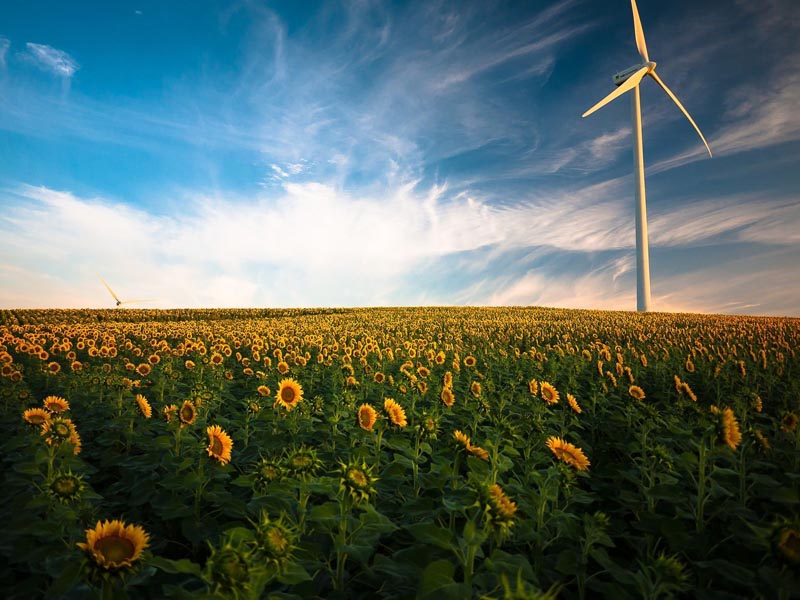Green GDP may be defined simply as a conventional gross domestic product figure adjusted for the environmental costs of economic activities. It is an economic index that quantifies and calculates environmental consequences of that growth. Thus, it gives importance to natural capital – one of the four types of capital (asset resources) of a nation, other three being as physical, social, and human capital. Green GDP monetizes the effects of the loss of biodiversity and the costs of climatic changes and hence presents a comprehensive measure of how a country is prepared for sustainable economic development. The United Nations Environment Programme (UNEP) has developed a working definition of a ‘Green Economy’ as the one which results in improved human well-being and social equity, while significantly reducing environmental risks and ecological scarcities.[i] In its simplest expression, a green economy can be thought of as one which is low carbon, resource efficient and socially inclusive. Indeed, the “G” in GDP should stand not for “gross” but it must go with “Green”.
Recalling the contemporary India’s 1st environmentalist movement, the Chipko Movement, of mid-1970s, where the women of Uttarakhand hugged the trees of the hills to ensure that their forests were protected from rapacious contractors, indeed modern India’s environmental consciousness was born many years back. Increasingly, environmentalism in this country is not a matter of lifestyle but a matter of great importance for livelihood too. China until now is the only major country which uses Green GDP as its measure for economic viability. It published its first green GDP data in late 2006, for the year 2004. The Indian Govt has also been taking major steps in establishing Green GDP estimates for India, including establishment of National Environmental Protection Authority (NEPA) and National Green Tribunal, which is another initiative in this direction.
Need for greening India’s GDP arises from a host of reasons: firstly, ‘real’ economic growth matters, especially for a country like India- a multi-diverse and heavily populated country which has large heaps of nature, renewable energy, and talent in human capital resources. By “real”, it should imply a growth in human capabilities and social institutions also; as well as tackling the environmental issues of the country. Secondly, for maintaining India’s global position and taking a lead – it is critical for India to step into as the biggest hub for research and development for green solutions. It has the world’s third largest pool of scientists and engineers and is rated as the third most attractive country for renewable energy investment. The transition is already in great progress at MNCs and industry level. From employment angle also, by green GDP evaluation, concerns for green jobs comes in forefront and India is in a unique position to create a low-carbon green economy generating more environment related services, downstream jobs. Finally, climate change alarm ringing cannot be ignored. It is a call for sustainability! Given the huge loss of biodiversity, India cannot afford NOT to transform into having a green GDP. The Climate Disclosure Project on climate change shows that by 2100 India’s GDP growth will be around negative 9-13% due to the impacts of climate change affecting business, livelihood and hence the economy!
The road ahead requires three main actions – measure, enforce and make choices. The Indian government and concerned authorities should periodically measure our available and allocable resources then can be managed and monitored. Then comes enforcing right laws, new and amending the old, as India is fortunate enough to have the most progressive legislation on environment too, including- Forest conservation act, Environment protection act, Coastal regulation zone, wildlife protection acts etc. With a greater political will, we need enforcements in an accountable, transparent and a productive manner. Finally, we must make the justified choice – choosing between productive output growth v/s conservation of natural resources, as a nation.
In conclusion, main idea for green GDP underlies the truth that growth must be aimed at, but with limits. A 7% growth rate which ensures protection of forests and conserved livelihoods is far better than a 9% growth rate which erodes the very environment’s risks, climate, destroying the sustainability of the economy! Having rosy aims of high figures in growth is good only in short term, but it needs to be balanced with long term measures, policies for ensuring protection of forests, clean rivers, and stable livelihoods for sustainable economic progress, and overall real growth of our Indian economy.[ii]
[i] http://www.unep.org/greeneconomy

By Shobhna Jha
(Ph.D. Economics Research Scholar, at IIT Delhi and Kathak Artist)


